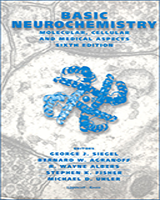From: Molecular Components of the Neuronal Cytoskeleton

NCBI Bookshelf. A service of the National Library of Medicine, National Institutes of Health.

The cytoskeletal elements of a growth cone are organized for motility. In this diagram of a growth cone, a typical distribution of major cytoskeletal structures is shown. The microfilaments are longer and more prominent in the growth cone than in other regions of a neuron. They are bundled in the lamellipodia and particularly in the filopodia. A combination of actin assembly, microfilament cross-linking and myosin motors (see Chap. 28) is thought to mediate this movement. In the central core of the growth cone, the microfilaments may interact with axonal microtubules which do not extend to the periphery. These microtubules may be pulled toward the preferred direction of growth and appear to be necessary for net advance. In the absence of microtubules, filopodia extend and retract but the growth cone does not advance. Microtubule movements are thought to be a combination of assembly and contractility. Finally, the neurofilaments appear to stabilize the neurite and consolidate advances but appear to be excluded from the growth cone proper.
From: Molecular Components of the Neuronal Cytoskeleton

NCBI Bookshelf. A service of the National Library of Medicine, National Institutes of Health.